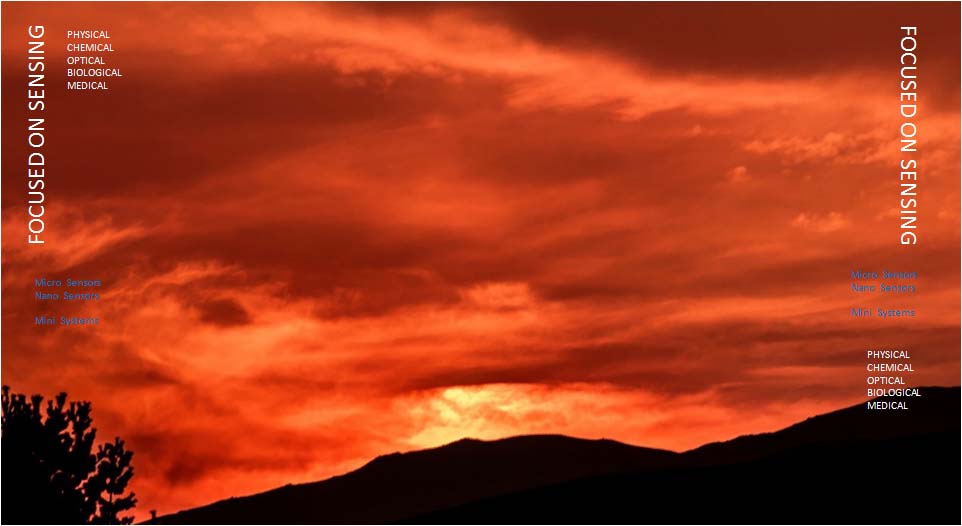











This type of sensors are made by etching off material from a substrate. The above picture shows Waddan's Axlgyro machined out of <100> silicon substrate, and is sandwiched between two Pyrex glass plates.

This type of sensors are made in three layers of thick polysilicon films. Surface micromachining produces these devices. The sensing element along with associated compliant structures is built in the middle layer, and the top and bottom layers make up the pick-off and forcer drive electrodes. The above picture shows a two-gimbal square gyro. The hole pattern is made to allow sacrificial etchant to reach under the top and middle layers for etching oxide.
 This type of sensors are made by depositing material
in micro cavities formed in photoresist or photoresist like materials and then dissolving away the
photoresist, and thereby leaving the deposited cast forms as the sensor elements. The above picture
shows two photographs of a micromolded pendulous accelerometer on the right. The top photo shows
the compliant hinge (made as a symmetric serpentine structure), and the bottom photo shows a section
of the forcer comb drive and the tip of the tunnel diode pick-off.
This type of sensors are made by depositing material
in micro cavities formed in photoresist or photoresist like materials and then dissolving away the
photoresist, and thereby leaving the deposited cast forms as the sensor elements. The above picture
shows two photographs of a micromolded pendulous accelerometer on the right. The top photo shows
the compliant hinge (made as a symmetric serpentine structure), and the bottom photo shows a section
of the forcer comb drive and the tip of the tunnel diode pick-off.
 Laser
machining is used mostly for cutting to release sensing elements which
otherwise would break off during wafer processing. In its low power
form, the laser is also used to make positive ohmic contact (welding of
two metallic film surfaces bearing against each other). At microscopic
level, a laser cut line is not as smooth as that made by etching along
crystal planes. That's why it is difficult to form a complete micro
device using laser machining alone.
Laser
machining is used mostly for cutting to release sensing elements which
otherwise would break off during wafer processing. In its low power
form, the laser is also used to make positive ohmic contact (welding of
two metallic film surfaces bearing against each other). At microscopic
level, a laser cut line is not as smooth as that made by etching along
crystal planes. That's why it is difficult to form a complete micro
device using laser machining alone.
